Alpha PAL6035 vs Zalman CNPS3100-Gold (4/4)
Posted by Wesley on| CPU: | AMD Duron 650@945 & AMD Athlon(T-bird) 750@1113 |
| M/B: | Asus A7V (VIA KT133 chipset) - VIA 4-in-1 v4.27 - |
| Cooling: | PAL6035 & CNPS3100 |
| RAM: | 256MB x 1 OCZ PC150 CAS2 SDRAM |
| Video: | SUMA GeForce2 GTS 32MB - NVIDIA Det. v6.34 - |
| OS: | Windows 2000 - Version 5.00.2195 SP1, English - |
| Else: | Motherboard Monitor 5.03, Seventeam ST-301HR PSU |
Update: Kyle of HardOCP is concerned that the temperature reading of Alpha you see here looks wrong. I'm quite aware of the situation and I do believe it is related to the A7V's temperature sensor being a bit inaccurate. But the readings have been quite reproduceable in this system, and since this can be seen as relative comparison, you can still validly determine which one is better.
Update 2: I've confirmed that my temperature reading is actually more representative of the truth since I use external temperature sensor attached directly to the core instead of using temperature sensor inside the CPU socket.
Chart data was assessed by using interval log option of Motherboard Monitor in steps of 30 seconds for one hour of boot time, then entered into Microsoft Excel to produce the actual chart.
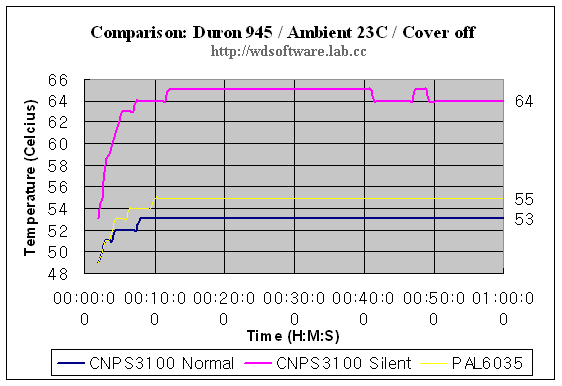
First test was done with Duron 650 overclocked to 945MHz. It is easily recognizable that CNPS3100-Gold pulls ahead of PAL6035 by a comfortable 2 degrees in normal mode. This means that, despite the fan's airflow is distributed to the mainboard in general instead of focused on the heatsink itself, CNPS3100 is effectively cooling the hot overclocked Duron with ease. Silent mode operation is another matter, though. Being 11 degrees higher than normal mode, it is unsuitable for overclocking. However, the fan was very quiet, so it can be useful in non-overclocked environments and CPUs that dissipate less heat than AMD chips, such as Intel Celeron.
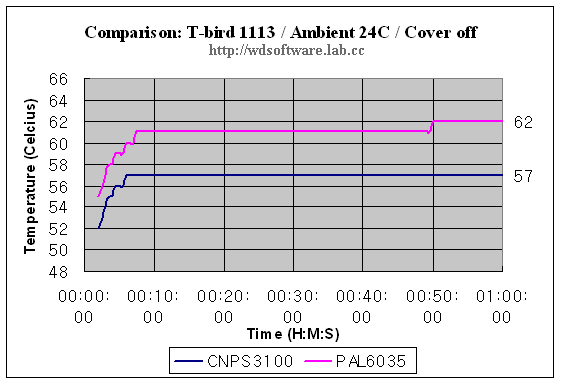
Another round of tests were performed with 'Thunderbird' Athlon 750 running at notably high 1113MHz. The CNPS3100 again beats PAL6035, this time in a slightly larger margin. Silent mode of CNPS3100 could not be completed and was not listed here because it promptly caused halting of system within 10 minutes due to overheat.
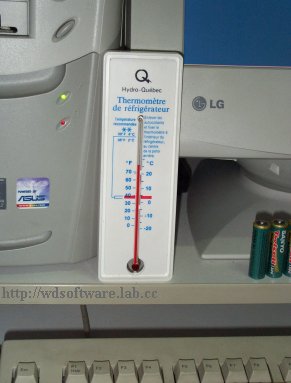 The ambient temperature was closely monitored with thermometers such as this Hydro-Quebec thermometer that's been rolling around since my Canadian days and I've taken care to make sure that the temperature remained constant during testing to prevent measurement errors.
The ambient temperature was closely monitored with thermometers such as this Hydro-Quebec thermometer that's been rolling around since my Canadian days and I've taken care to make sure that the temperature remained constant during testing to prevent measurement errors.The verdict of this comparison is clear. While both heatsinks provide good cooling, CNPS3100-Gold comes out superior all the time, winning this round of match. Also, looking at the performance delta between CNPS3100 and PAL6035 and then comparing the results from other hardware sites, while the comparance may not be really so linear, we can safely assume that it can take on the all-copper 'hedgehog' cooler or the monstrous GlobalWin FOP38, both of which are currently taking the performance crown, pretty well. Since FOP38's delta fan is notorious for its near-unbearable noise levels, CNPS3100 with its low-noise fans may be a better alternative.
Finally, I end this review-comparison with testimony from 'Schpankme', a regular at MadOnion's forums and chatrooms(where I am working as a moderator) who is probably the first American to get his hands on the CNPS3100. Yes, I've shipped him the product personally because Zalman doesn't have foreign offices/distributors outside Korea. He is seeking to form a distributor of this product in the USA and I'll be attempting to arrange this with him imminently. Anyone who are interested may contact me.
Update 3: I have now set up international order page for this heatsink [HERE]. Those who were thinking of ordering Zalman heatsinks can rest easy now.
WDSoft,
Thought I'd drop you a quick update on my newly acquired FHS unit from Zalman. The quality is awesome, the size is just right and the clip is easy to install and remove, the fan bracket is a very useful idea for any HSF. I however am NOT impressed with the FAN that came with my unit, and wonder if it actually functions properly or is broke! I am plugging up with the 4-pin adapter, yet it barley puts out enough air to even feel it on your hand. I have replaced the fan with Sunon 80mm x 25mm, 12v, .16 amp, 2.0 watt, 4500 RPM, 36 CFM, 32 dBA, 3 pin. This fan is very quiet inside the case, and as you can see by picture attached to this email, it really does a lot for the cooling potential of this setup. The temps listed are for average usage, which consists of email, web-surfing, and Microsoft cards type game play. Load testing was accomplished using Prime95, ran for 24 hours in conjunction with other apps and games; and at NO times did my temps get above 40C. I must say I really enjoy my newly found prize, and I owe a big thanks to you for trusting me enough to order me one. Now your thinking to yourself, ok pank has a more powerful fan blowing substantially more air across the heat sink surface, so naturally it will be some what cooler. Well, yes you could think that, and it would be correct, but I have also disconnected my 2-side 92mm blow holes, and am running with full covers on the case. I also attribute my understanding of how to lap the Heat Sink, as well as applying the proper ratio of COPPER thermal compound before installation of Heat Sink to CPU Core.
Understand, I am in no-way holding you responsible for the units fan performance or the lack thereof. I would like to know if your fan has what I term the same lackluster performance. One last final note, I wasn't able to send you the sanding cloths we spoke of. It seems the store was out of the assorted packs, and just got them in today. I will however be mailing them off first thing Monday morning ad hopefully you will receive them a few days later!
Thank you again for making me aware of this fantastic FHS Gold-3100. I have decided to import these units into the States for sale, could you be of assistance in knowing the quantity and price breaks I could receive.
Blue Skies;
Schpankme Verimuch
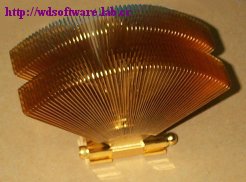
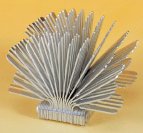 CNPS3100 is the latest in the product lines of the Zalman HSFs, just released in the December of 2000. You can read its news release
CNPS3100 is the latest in the product lines of the Zalman HSFs, just released in the December of 2000. You can read its news release 
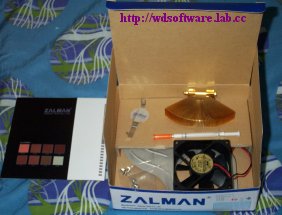
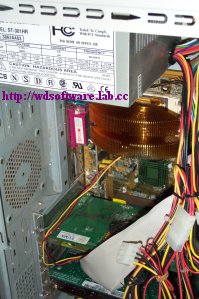
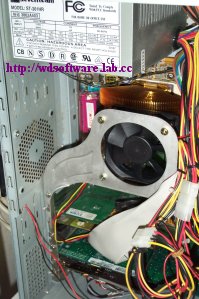
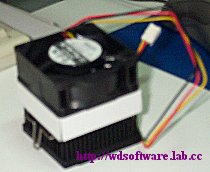
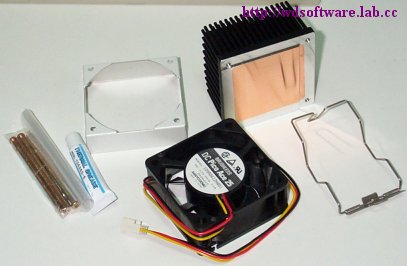
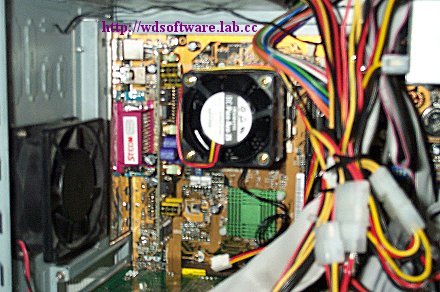

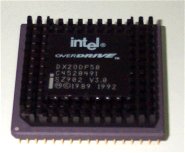 This trend started to change at around the propagation of 486 chips. They were already becoming too hot to touch, and faster versions of 486 started to have heatsink attached on the ceramic package. The Pentium Overdrive processor, shown on the left and plugged into a 486 system, shows such examples of early heatsink coupled CPUs. First Pentium CPUs, the 60MHz and 66MHz versions, were notorious for excessive heat dissipation and was one of the first personal computer CPUs requiring active cooling by motorized fan. Since then, HeatSink-Fan combo(HSF) became standard attachment to CPU.
This trend started to change at around the propagation of 486 chips. They were already becoming too hot to touch, and faster versions of 486 started to have heatsink attached on the ceramic package. The Pentium Overdrive processor, shown on the left and plugged into a 486 system, shows such examples of early heatsink coupled CPUs. First Pentium CPUs, the 60MHz and 66MHz versions, were notorious for excessive heat dissipation and was one of the first personal computer CPUs requiring active cooling by motorized fan. Since then, HeatSink-Fan combo(HSF) became standard attachment to CPU.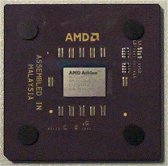 The problem did not end there, though. Personal computer CPU development was accelerating day by day and introduction of ever-so-powerful CPUs were frequent. Processing power-wise, top-of-the-line CPUs today are comparable to top 100 supercomputers of only 4 to 5 years ago. In consequence, CPU's heat dissipation rate gradually increased. Smaller manufacturing process does help CPU produce less heat, but this does not help much in reducing the heat dissipation of the most powerful processor on the market. This is because the operating frequency is increasing at a faster rate. One of the hottest(literally and figuratively) chip of today,
The problem did not end there, though. Personal computer CPU development was accelerating day by day and introduction of ever-so-powerful CPUs were frequent. Processing power-wise, top-of-the-line CPUs today are comparable to top 100 supercomputers of only 4 to 5 years ago. In consequence, CPU's heat dissipation rate gradually increased. Smaller manufacturing process does help CPU produce less heat, but this does not help much in reducing the heat dissipation of the most powerful processor on the market. This is because the operating frequency is increasing at a faster rate. One of the hottest(literally and figuratively) chip of today,